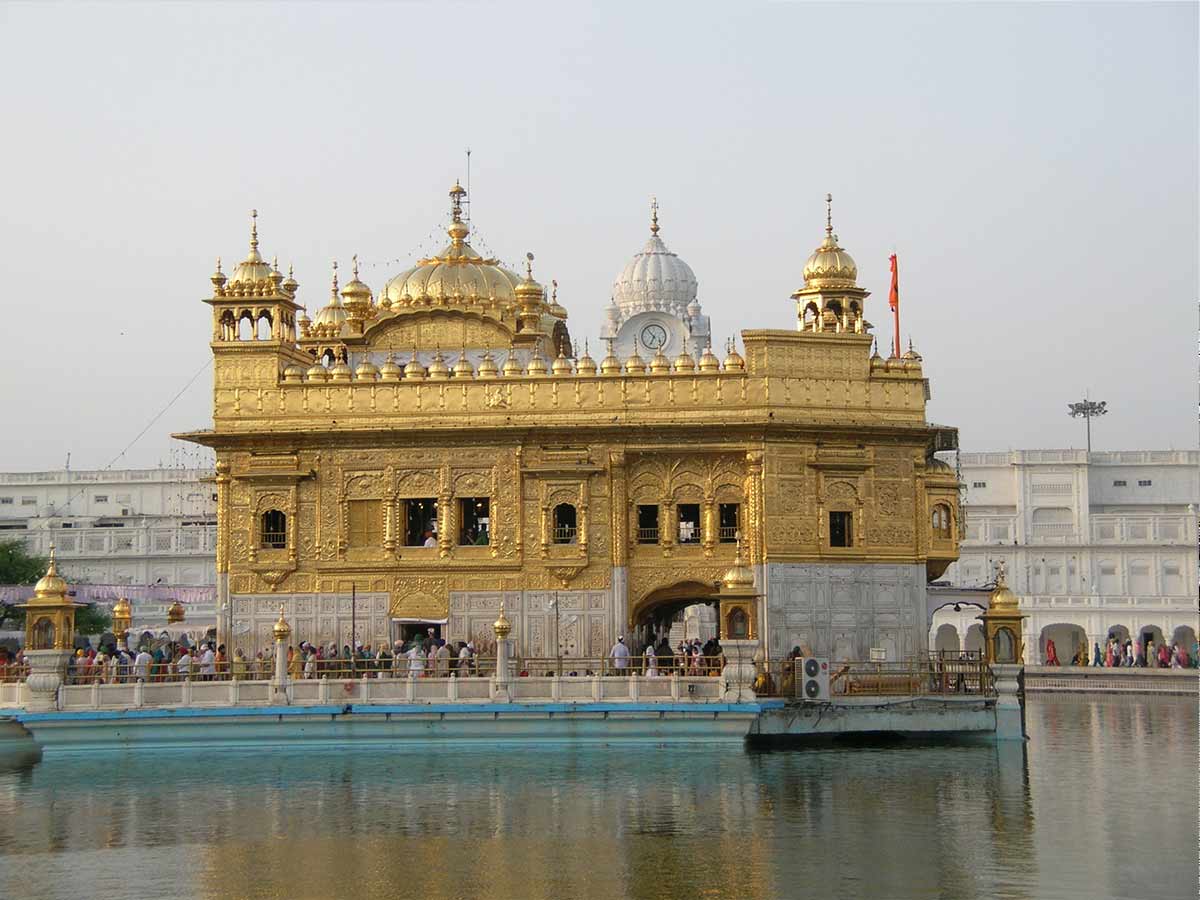Golden Temple: A Golden Legacy

Harmandir, also pronounced Harimandir, is the chief gurdwara, or house in worship, Sikhism, and the most important pilgrimage site for Sikhs. It is also known as Darbar Sahib or the Golden Temple. It is situated in Amritsar, Punjab province, in northwestern India.
Arjan, the fifth Sikh Guru, designed the first Harmandir Sahib in 1604 and symbolically installed it on a lower level to join it even the most modest. He also had exits on all four sides, indicating that it was accessible to all castes and creeds. Mian Mir, a Muslim saint from Lahore, laid the foundation stone. The temple was demolished several times by Afghan invaders before being reconstructed in marble and copper overlaid with gold foil during Maharaja Ranjit Singh's reign (1801–39). As a result, the building came to be known as the Golden Temple.
The Harmandir Sahib is the focal point of a complex of buildings that serves as the spiritual center of Sikhism. The temple itself is located on a small island in the center of the tank, or lake, known as the Amrita Saras ("Pool of Nectar"), the source of the city's name and is linked to land on its west side by a marble causeway that runs through the pool's water. The Akal Takht, the chief seat of authority in Sikhism, and the Shiromani Akali Dal's headquarters (Supreme Akali Party), the largest political party of Sikhs in Punjab, is located facing the causeway's entry.

Guru Arjan, the fifth Guru of the Sikhs, inserted a copy of the Adi Granth, the main scripture of Sikhism, within the gurudwara in 1604. At the time, the location was known as the Ath Sath Tirath.
The main entrance to the compound and the Teja Singh Samudri Hall (Clock Tower) on the north side of the tank house the Shiromani Gurdwara Parbandhak Committee (Supreme Committee of Temple Management), which manages the main Sikh gurdwaras. There are many houses on the east side of the tank, including the Assembly Hall and the Guru Ram Das Langur. This colossal dining hall serves food to thousands of pilgrims and other tourists each day.
The new gurudwara structure dates from the 18th century. Its construction began in 1764 and was finished in 1776 under the supervision of Sultan-e-Quam Sardar Jassa Singh. In 1830, Maharaja Ranjit Singh restored the gurudwara and adorned it with gold foil, earning the Harmandir Sahib the nickname "Golden Temple."

On June 6, 1984, the Golden Temple became a flashpoint in a confrontation between armed Sikh rebels hidden inside the holy shrine's grounds and the Indian government. Indira Gandhi, India's former Prime Minister, forced the Indian Army to march into the shrine and conduct Operation Blue Star. This military activity inside the Golden Temple killed over 1000 people, including terrorists, civilians, and troops. It also did significant damage to the temple. The Sikh group came together once more to renovate the temple.
Also, Stay updated with the Golden Temple News, click here
The Golden Temple Architecture
The Golden Temple is located in the middle of Amritsar, or Amrit Sarovar, a majestic body of water that gives the city its name. The shrine incorporates elements of various architectural styles, including Indo-Islamic Mughal and Hindu Rajput architecture. It is a two-story building. The lower level of the shrine is made of stone, while the upper level is decorated in gold panels. At the top of this building is a 750 kg gold-gilded pyramid. And the shrine's doors are encased in gold foil.
The shrine's interiors are lavishly decorated with floral motifs and frescoes. Sikh scripture verses are inscribed in gold lettering on the shrine's arches. The Golden Temple complex has four entrances, but only one leads to the Gurudwara.
The gurudwara is made up of many buildings that surround the main sanctum and the water source. The most prominent of these is Akal Takht, one of Sikhism's five seats of influence. There is also a clock tower, a museum, offices, and langar, a communal kitchen.
Ceremonies and Langar in the Golden Temple regularly
Regularly, a host of rituals take place within the Golden Temple. The key ceremonies are as follows:
Sukhasan, or the Closing Ritual, refers to closing the Guru Granth Sahib at night and its placement in a beautifully carved palanquin. The holy book is then taken to the Akal Takht on the first floor and placed in a tent.
Prakash, or the Opening Ritual: Every morning, the Guru Granth Sahib is taken from the Akal Takht and brought in a flower-decked palanquin to the Golden Temple's sanctum. Following the traditional kirtan singing, a random page is opened and read aloud.
Langar: Thousands of residents are served free food from the temple's soup kitchen every day. This is known as langar, and it is a practice in which everybody sits on the ground. It enjoys the plain yet tasty vegetarian meal served there.
Lesser Known Facts of Golden Temple
1. In 1830, two centuries after its completion, Maharaja Ranjit Singh shrouded it in gold. This required 162 kg of gold, which was then worth approximately Rs 65 lakh.
2. It was renovated in the 1990s with 500 kg of gold. The current market value of this amount of gold is more than Rs. 140 crores.
3. It's all made of 24-karat gold, which is much purer than the 22-karat gold commonly seen in Indian homes today.
4. It has the world's largest langar, serving approximately one lakh people every day. During the holidays, this number more than doubles.
5. The water body of the Golden Temple is said to have healing properties.

